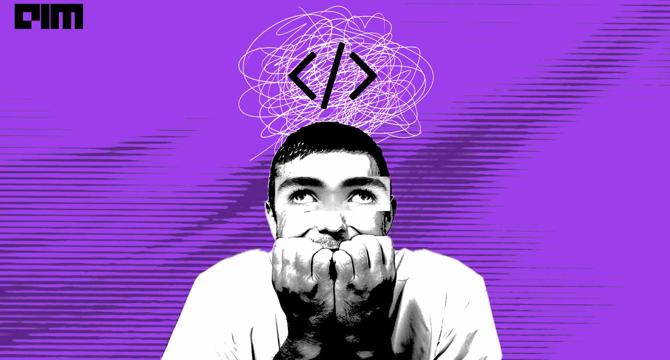Data Science News
Medium
9

Image Credit: Medium
What Are Apps You Use Really Collecting About You? Is it Necessary?
- Popular apps are silently collecting a lot of personal data beyond what users realize, including location, contact lists, microphone and camera access, clipboard snooping, app usage patterns, and device data.
- Some popular Indian apps like Truecaller, ShareChat, Moj, MX Player, and finance apps have faced scrutiny over invasive data collection practices, triggering warnings and investigations.
- Steps to stay safer include reviewing permissions regularly, turning off unnecessary background access, avoiding social logins when not necessary, and being cautious with apps lacking transparency or a privacy policy.
Read Full Article
Like
Analyticsindiamag
312

Image Credit: Analyticsindiamag
Pinterest Upgrades Visual Search With AI
- Pinterest has launched new AI-powered visual search features for fashion content in the US, Canada, and the UK.
- Users can now search, shop, and refine fashion content using images instead of keywords.
- The new tools enable users to identify specific elements in images and shop for similar items.
- The update, powered by generative AI, aims to provide a more personalized and intuitive discovery experience for users.
Read Full Article
18 Likes
Analyticsindiamag
129

Image Credit: Analyticsindiamag
Databricks in Talks to Acquire Database Startup Neon for $1 Billion
- Databricks is in talks to acquire San Francisco-based database startup Neon for around $1 billion.
- Neon's cloud database service is designed for AI agents and applications to handle multi-step tasks efficiently.
- Neon offers cost-effective options for customers using AI agents in businesses, allowing payment for short database usage periods.
- The potential acquisition of Neon by Databricks would enhance its infrastructure layer and provide a contemporary, AI-focused transactional database.
Read Full Article
7 Likes
Analyticsindiamag
1.7k

Image Credit: Analyticsindiamag
Why You Should Not Miss AWS Summit Bengaluru 2025
- AWS Summit Bengaluru 2025 is a must-attend event for technologists and business leaders happening on May 7 & 8 at KTPO Exhibition Center, Whitefield.
- The summit offers insights, hands-on experiences, and learning opportunities for startups, enterprises, and those interested in generative AI.
- The event focuses on cloud, AI, and innovation, showcasing India's role in driving global digital transformation through AWS.
- Speakers at the event will discuss responsible AI, fintech infrastructure, real-time payments, and building for developers in an API-first world.
Read Full Article
23 Likes
Towards Data Science
221

Benchmarking Tabular Reinforcement Learning Algorithms
- The article explores benchmarking tabular reinforcement learning algorithms based on the seminal book by Sutton and Barto, focusing on Dynamic Programming, Monte Carlo methods, Temporal Difference Learning, and Model-Based RL/Planning.
- The benchmarking framework involves evaluating algorithms on increasingly larger Gridworld environments to compare their efficiency and effectiveness in solving tasks.
- Key algorithms like Q-learning, value iteration, Sarsa, and Dyna-Q are discussed and benchmarked on Gridworlds up to size 50x50.
- Results indicate that Value Iteration outperforms other methods, followed by On-policy MC, Dyna-Q, Q-learning, and Sarsa-n in the context of simple, fully-known, and deterministic environments.
- Performance rankings show On-policy MC as the best model-free algorithm, while Dyna-Q blends model-based planning with model-free learning for improved results.
- The article discusses the trade-off between efficiency and generality in reinforcement learning algorithms, with future plans to benchmark in more challenging environments and explore function approximation in Part II of Sutton's book.
- The detailed experiments, rankings, and discussions offer insights into the performance of tabular RL algorithms, showcasing the strengths and limitations of each method.
Read Full Article
13 Likes
Analyticsindiamag
431

Image Credit: Analyticsindiamag
Remidio’s AI Tools for Glaucoma, AMD Get CDSCO Approval
- Remidio Innovative Solutions has obtained CDSCO approval for its AI-based tools to detect glaucoma and AMD, following the success of their diabetic retinopathy tool.
- The new glaucoma and AMD tools are designed to work offline, making them suitable for use in remote areas with limited access to eye care specialists.
- Medios HI Glaucoma AI detects early signs of glaucoma using heat maps, addressing the issue of underdiagnosis in India where over 90% of glaucoma cases remain undetected.
- The AI tools have been tested in real hospitals and integrated into Remidio's portable eye camera device, enabling quick and accurate detection of glaucoma, AMD, and diabetic retinopathy.
Read Full Article
25 Likes
Analyticsindiamag
119

Image Credit: Analyticsindiamag
Salesforce Targets 50% AI-Generated Code by End of 2025
- Salesforce aims for 50% of code to be AI-generated by end of 2025, in line with tech giants like Microsoft and Google.
- AI already creates about a third of Salesforce's code, leading to 30% productivity gains and faster bug detection.
- Salesforce CEO Marc Benioff announced a freeze on software engineer hiring due to AI-driven automation.
- AI usage spans development stages, from code writing to deployment monitoring and incident reporting.
- Salesforce focuses on AI products and internal AI use, including Agentforce for autonomous agents and Data Cloud for data integration and unified customer profiles.
- Salesforce's Data Cloud reached $900 million in annual recurring revenue and facilitates personalised responses based on structured and unstructured data.
- Salesforce experiments with Model Context Protocol, Heroku, and Agent2Agent protocol with Google for customized API interactions.
- Salesforce compares AI agents' impact to early cloud computing days, anticipating up to 10 times more productivity and job creation.
Read Full Article
7 Likes
Medium
893

Image Credit: Medium
Traders Ignore This Obscure Indicator — Until It Saves Them
- The article discusses the importance of the Relative Directional Index (RDI) in evaluating market conviction during live trades.
- RDI focuses on quantifying the directness of price action and filtering for conviction rather than just movement.
- The article details strategies for using RDI, such as the False Reversal Filter and Breakout Streak Logic, to make informed trading decisions.
- RDI divergence helps in identifying potential reversals and questioning the legitimacy of momentum, providing a valuable tool for traders.
Read Full Article
10 Likes
Analyticsindiamag
87

Image Credit: Analyticsindiamag
Coforge Posts 32% FY25 Revenue Surge, Unveils GenAI Centre of Excellence
- Coforge reported a 32% YoY revenue growth in FY 25, reaching ₹12,050.7 crore ($1.45 billion) with a 31.7% YoY rise in EBITDA to ₹1,998.2 crore.
- In Q4, revenue stood at ₹3,409.9 crore ($403.5 million), up 3.4% QoQ, with EBITDA at $68 million, showing a 32.7% YoY increase.
- Coforge launched a GenAI Centre of Excellence in collaboration with ServiceNow to focus on genAI-powered solutions for financial services and travel sectors.
- The company achieved a record order intake of US$2.1 billion in Q4, with a 35.5% YoY increase in headcount to 33,497 employees and low attrition rate of 10.9%.
Read Full Article
5 Likes
Towards Data Science
305

Think. Know. Act. How AI’s Core Capabilities Will Shape the Future of Work
- Many business leaders have high expectations for AI but encounter limited results due to a misunderstanding of its capabilities.
- AI can be evaluated based on three core capabilities: Think, Know, and Act.
- Think focuses on an AI's ability to reason, plan, and make decisions autonomously.
- Know involves AI's access to and application of relevant knowledge through Retrieval-Augmented Generation (RAG).
- Act relates to AI's execution of tasks by interacting with tools, systems, and workflows via Model Context Protocol (MCP).
- When combined, these capabilities transform AI into an action-oriented collaborator.
- Thinking AI operates like a smart analyst, making decisions and taking initiative.
- Knowing AI ensures access to up-to-date, business-specific knowledge for more accurate responses.
- Acting AI goes beyond recommendations, executing tasks and delivering real outcomes.
- The integration of Think, Know, and Act creates intelligent, proactive AI that drives meaningful business value.
Read Full Article
18 Likes
Analyticsindiamag
408

Image Credit: Analyticsindiamag
Amazon Q Developer Adds GitHub Integration
- Amazon launched a preview of Amazon Q Developer integration for GitHub, allowing developers to build, review, and migrate code within repositories.
- The Amazon Q Developer GitHub app can be installed across repositories, assigns GitHub issues, generates features, creates pull requests, and runs basic checks on output.
- Developers can use Amazon's generative AI developer agent in the workflow through the GitHub app without an AWS account.
- Amazon Q Developer offers feature development, code review, and code transformation functionalities, making it one of the few AI coding assistants integrated closely with GitHub.
Read Full Article
24 Likes
Analyticsindiamag
198

Image Credit: Analyticsindiamag
‘I Want the Best Open-Source Model to be From US,’ Says OpenAI’s Kevin Weil
- OpenAI is developing an open weights model in the US to become the most widely used globally, reflecting democratic values.
- Kevin Weil of OpenAI aims for the best open weights model globally to be US-built, not Chinese.
- The model is intended for global adoption, limiting strategic acceleration by adversarial states, positioned as a generation behind OpenAI's frontier models.
- OpenAI's approach balances broad AI system access, national security, and value alignment, maintaining proprietary frontier models while making smaller models open-source.
Read Full Article
11 Likes
Analyticsindiamag
371

Image Credit: Analyticsindiamag
OpenAI Restructures For-Profit Arm into Public Benefit Corporation, Maintains Nonprofit Control
- OpenAI has restructured its for-profit arm into a public benefit corporation (PBC) while ensuring its nonprofit entity continues to oversee and control the organization.
- Originally operating as a nonprofit, OpenAI introduced a for-profit LLC in 2019 to attract investors while capping profits. This LLC has now become a PBC to align better with the company's mission and the evolving AI landscape.
- The decision to convert the for-profit arm into a PBC was aimed at pursuing both shareholder returns and social objectives. However, the control over the organization will remain with the nonprofit entity.
- The restructuring will help OpenAI secure the necessary funding to develop powerful AI systems and expand programs focused on democratizing AI and supporting its use in various sectors like healthcare and education.
Read Full Article
22 Likes
Analyticsindiamag
243

Image Credit: Analyticsindiamag
Only Fools Think Coding is Dead
- Despite claims from various tech entities, coding continues to be predominantly done manually by developers, as opposed to being entirely AI-generated.
- The trend of 'vibe coding' and the promotion of coding alternatives have sparked debates on the relevance of traditional coding skills.
- Experts emphasize the importance of learning to code early and refute the notion of coding becoming obsolete.
- AI tools have made coding more accessible but haven't rendered human programming skills unnecessary.
- While AI may streamline coding processes, understanding the fundamentals of coding remains crucial for problem-solving and innovation.
- Tech leaders like Sundar Pichai and Satya Nadella maintain that the demand for skilled engineers is increasing, highlighting the continued significance of coding expertise.
- Debates around coding education amidst AI advancements persist, with varying opinions on the evolving role of human programmers in the future landscape of technology.
- Contrary to alarmist claims, the need for engineers and coding proficiency remains high, with the emphasis shifting towards comprehensive technical understanding rather than mere coding ability.
- Business interests and viral messaging often fuel the narrative of coding obsolescence, masking the enduring importance of coding skills in the tech industry.
- The discourse on coding's future underscores the ongoing relevance of cultivating coding proficiency alongside adaptive problem-solving abilities in the rapidly evolving technological domain.
Read Full Article
14 Likes
Analyticsindiamag
449

Image Credit: Analyticsindiamag
Chhattisgarh Unveils ₹1000 crore AI-Based Data Centre Park
- Chhattisgarh's CM inaugurated one of India's first AI-based data centre parks in Raipur with an estimated ₹1000 crore funding.
- The park, developed on 13.5 acres of land, focuses on AI services with an initial capacity of 80 MW, expandable to 150 MW.
- The project by Rack Bank Data Centres will offer AI services in various sectors like Health Tech, Fintech, Defence, and Agriculture.
- The data centre park aims to create job opportunities while enhancing government services and promoting digital self-reliance in the state.
Read Full Article
26 Likes
For uninterrupted reading, download the app